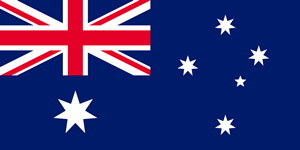The 6th February 2022 was the 70th anniversary of Her Majesty, Queen Elizabeth II, being proclaimed Queen. She was a young married woman of 26 years of age, born in 1926. March 6th is not the date that she was crowned. The coronation would come later, 2nd June 1953 in Westminster Abbey. Her first visit to Tasmania occurred in February 1954 when she was invited to open the Tasmanian Parliament. The Queen was accompanied by her husband, The Duke of Edinburgh, Prince Philip.
The Queen was the first child of King George VI and Queen Elizabeth. She did not expect to become monarch so soon, if ever. She was third in line, after her uncle, Edward, The Prince of Wales and her father, the Duke of York. She and Philip married 20th November 1947 at Westminster Abbey. The Duke died 9th April 2021, three months shy of his 100th birthday. Who could forget the lonely figure, clad in black, mourning alone? The Queen had been informed that it was not necessary, but she chose to adhere to the same regulations that had been imposed upon her people. We have seen it was not the case for many politicians obeying the same rules which they themselves decreed.
What dramatically intervened in her life was the Constitutional crises involving Edward the Prince of Wales and Mrs Wallis Simpson. The affair ended in controversy when Edward, the king, but not crowned, abdicated in 1936. This meant that his younger brother George had the throne forced on him, a role he had not preferred to have inherited. It was Shakespeare who said, “some have greatness thrust upon them”. The reluctant Prince, then known as Albert, proved to be a great king.
The King did not enjoy good health and underwent an operation and afterwards appeared though weak, fitter. His illness continued and it was obvious he was dying of cancer. At this time Princess Elizabeth and the Duke had two young children, Charles and Anne. For a number of months the King prevailed. On the 31st January 29t 1951 the King waved goodbye to his daughter and son-in-law from the London Airport. They were off to a tour of East Africa. In the small hours of 6th February 1952 the King died.
The young couple were enjoying a stay at a hunting lodge, a wedding present from the inhabitants of Kenya, when the news of the death of her father, was received. She had planned to move on to Australia and New Zealand, but she immediately drafted apologies herself. One vital chore she had, as now monarch, was to declare as Queen, how she would be known. Her full name is Elizabeth Alexandra May. Her title would now be Elizabeth the Second, by the Grace of God, Queen of the United Kingdom and Northern Ireland.
In 2022, she is also the Queen of 14 Commonwealth Countries and Head of the Commonwealth of Nations. He has the title, “Defender of the Faith”.
By the time of her crowning in June 1953 she was the celebrated monarch of nearly a quarter of human beings then living on earth. She was crowned against the setting of Handel’s, Zadok the Priest and Nathan the Prophet.
Australia’s first l visit of the royal couple was when they arrived into Sydney 3rd February 1954 and later, on Saturday 20th February 10:30 am, the royal yacht Gothic berthed into Hobart where their hectic and extensive tour of Tasmania began. Upon arrival they were met and addressed by the Lord Mayor of Hobart, Sir Richard Harris and Lady Harris, at the Town Hall. It was on the Monday that Her Majesty opened the fifth session of the 30th Parliament of Tasmania, which was followed by a Garden Party at Government House. The media on the day said that 150,000 people lined the city streets as the royal couple proceeded from Parliament House to Government House. On the way in Stoke Street, a little Dutch girl, Jeltje Folkerts, in national costume, was waiting with a bouquet of roses as a tribute of loyalty from the New Australians. The Queen’s car halted, the Queen leaned over and accepted the bouquet with a warm smile.
On the Tuesday they departed from Cambridge aerodrome to fly to Wynyard and from there visited, Burnie, Ulverstone, Devonport and Launceston. They flew out of Western Junction aerodrome to Essendon, for Melbourne and for elsewhere.
It was part of a six month tour, so that the new Queen could meet her people world-wide.
The Queen is now 95 years old. Her reign has seen dramatic changes throughout Australia and the world. She has served faithfully for 70 years, making her not only the longest serving British monarch, but the longest serving monarch in the world.
Many of the years have not been easy for her, but she has endured through the ability to see things through, to sacrifice herself and dedicate her life to her people, not to governments, but to her people.
- Reg A. Watson is a Tasmanian author and historian and Tasmanian Convener of Australians for Constitutional Monarchy.
Pic: Author of the article, Reg Watson, with a “”Opening of Parliament by The Queen” (1954) brochure published by the Tasmanian Government. It was presented to him by the late Dr George Howatt, an American political scientist who made his home in Tasmania. Dr Howatt was the world’s leading expert on the voting system of the Hare-Clark.



